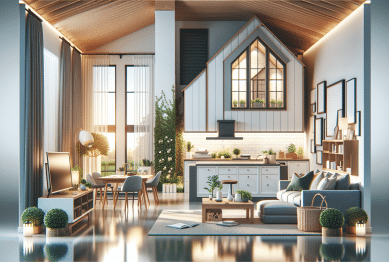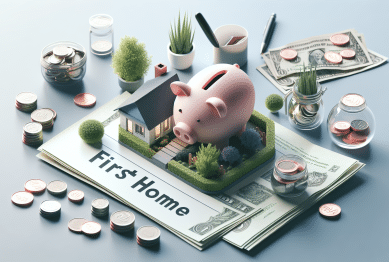Discover which surprising factors might shape the current value of your property. This article guides you through must-know influences on home prices, market appeal, neighborhood impacts, and the role of renovations—making sense of what really drives real estate value today.
Hidden Factors Shaping Property Value
When it comes to property value, many homeowners instinctively focus on curb appeal or modern kitchens. However, numerous less obvious factors can quietly influence how much a home is worth. For instance, proximity to green spaces, changes in local commuting infrastructure, or shifts in school zoning may all play roles that surprise homeowners. According to research on neighborhood characteristics, even minor differences in walkability or noise pollution levels can trigger notable shifts in assessed value (https://www.huduser.gov/). Consider how a new park, improved public transport, or better-rated school can vault one property ahead of others in the same area.
Not all hidden influencers require local government intervention. Homeowner associations, with their rules and enforcement consistency, can either support or slow price increases. Even factors like the average age of neighborhood homes can quietly change buyer perceptions and appraisal outcomes. In older neighborhoods, a well-maintained historic district may instill extra value based on aesthetics and community pride. At the same time, certain regulations—like historic preservation—can both enhance or restrict potential value, depending on buyer goals and market trends (https://www.nps.gov/tps/standards.htm).
Beyond aesthetics or infrastructure, unique property uses in a neighborhood can also impact prices. Homes near vibrant small businesses, like cafes or coworking hubs, often command higher attention, especially in urban markets. Sometimes, these micro-markets set trends that radiate across cities or suburbs. When a cluster of creative enterprises moves in, it creates an atmosphere that may prompt buyers to pay premiums for proximity to lively, innovative environments. Following trends in what’s thriving locally can reveal surprising signals for home value shifts (https://www.brookings.edu/).
How Buyer Preferences Impact Home Pricing
The criteria buyers use to select homes evolves constantly. While square footage or the number of bedrooms used to dominate, priorities now include flexible workspaces, outdoor patios, and smart home features. Results from a National Association of Realtors survey indicate buyers increasingly look for homes that accommodate remote work or provide adaptable family spaces (https://www.nar.realtor/). This shift can recalibrate prices for older properties suddenly considered ideal due to their larger yards or underutilized rooms.
Energy efficiency has also emerged as a critical element. Features such as upgraded windows, programmable thermostats, and solar panels often appeal to a new demographic of eco-conscious buyers. A property with low running costs not only attracts attention but can gently nudge comparable sales prices upward. Interestingly, studies have shown energy performance certificates can have a tangible impact on both perceived and actual value, especially in competitive markets (https://www.energy.gov/eere/buildings/articles/energy-performance-certificates).
A growing trend in real estate involves technology integration. Smart locks, security systems, and home networks are no longer just luxuries. As more buyers expect digital conveniences, even affordable upgrades in these areas can translate to stronger offers and increased perceived value. Properties seen as future-ready often stand out during open houses and in listing photos, making a strong digital presence yet another strategy for those looking to optimize sale outcomes.
Neighborhood Trends and Market Momentum
Market value is rarely shaped in a vacuum. Neighborhood trends have ripple effects through individual listings. For example, if several homes on a block undergo renovation or landscaping improvements, it may increase the perceived prestige of the area. These collective upgrades tend to generate a “halo effect,” drawing more motivated buyers and sometimes fostering bidding competition (https://www.urban.org/). Subtle alliances among neighbors—such as coordinated clean-up efforts or block beautification projects—can make a difference.
Economic momentum naturally influences real estate values. When a local market sees new employer investments, infrastructure projects, or the arrival of new services, optimism rises. This bump in confidence usually translates into increased activity and often, higher sold prices within a matter of months. Conversely, news of plant closures or cutbacks can create a chill in the property market. Savvy owners and buyers monitor local business news to anticipate these ripples.
Another overlooked driver? The frequency and quality of community events, markets, and festivals. Areas with recurring positive experiences, like street fairs or farmers’ markets, tend to develop reputations as vibrant, welcoming places. Homes in these neighborhoods may enjoy a value premium, especially when buyers compare amenities and lifestyle benefits that extend beyond the property lines.
Renovations That Carry Surprising Value
Many homeowners believe major kitchen or bathroom remodels are always a safe bet for raising value. However, the relationship between renovation investment and price increase is often complex. Recent research points to mid-range improvements—such as window replacement, attic insulation, or modest curb repair—as some of the highest-value returns relative to cost (https://www.remodeling.hw.net/). Smaller changes, like painting entry doors or updating lighting, can sometimes punch above their cost in boosting appeal.
Outdoor upgrades are surging as valuable investments. Well-designed patios, functional landscaping, or simple yard cleanups bring instant visual impact and support higher list prices. Today’s buyers frequently look for private outdoor zones, garden spaces, or decks for relaxing or socializing. Attention to outdoor appeal not only enhances first impressions but signals care and maintenance of the entire property—qualities buyers appreciate and often reward.
Don’t overlook the value of deferred maintenance. Simple fixes, like repairing leaky faucets, servicing HVAC systems, or patching driveway cracks, can prevent negative impressions. These actions offer reassurances to buyers that they won’t inherit unexpected problems and can help smooth inspection negotiations. Sometimes, modest investments into the basics can yield a stronger price increase than dramatic cosmetic overhauls.
External Events and Policy Shifts
While homeowners can control many elements of property presentation, external factors—both natural and regulatory—may unexpectedly affect home value. For example, new zoning laws permitting multifamily builds can change the desirability and density of single-family neighborhoods. Tax policy updates, floodplain remappings, or new municipal guidelines may also impact future property assessments (https://www.epa.gov/smartgrowth).
Natural events can rapidly shift market dynamics. Regions impacted by fire, flood, or hurricanes frequently see recalibrated insurance costs, altered lending guidelines, or adjusted municipal codes. While disasters can temporarily depress values, strong local recovery and support programs allow certain communities to rebound, adapting to new realities with resilient construction and neighborhood cohesion. Monitoring local government planning and climate adaptation measures can provide hints about potential future influences.
Broader economic policies, such as adjustments in mortgage rates or lending criteria, influence how much buyers can offer and what sellers are willing to accept. Even news of anticipated rate adjustments can shift buyer urgency and willingness to negotiate. For those tracking value, it’s essential to remain aware of both local rules and national financial trends, as these often interact in surprising ways to affect home prices.
The Role of Accessibility and Amenities
Accessibility is frequently underappreciated in value calculations. Proximity to key transport nodes, such as major roadways, railroad stations, or hubs for cycling and walking, can elevate a home’s market appeal. As more buyers value multi-modal transport options, properties supporting easy access often see higher interest and stronger price resilience during market slowdowns (https://www.transit.dot.gov/).
Nearby amenities—ranging from grocery stores and healthcare clinics to fitness centers and pet parks—consistently play an outsized role in pricing, especially in dense urban or fast-revitalizing suburbs. Some studies demonstrate a positive correlation between increased retail and service options within walking range and both higher selling prices and faster turnover. This remains true across demographic groups: younger buyers, seniors, and families all seek convenience as a core part of their purchasing decision.
The value equation isn’t limited to what surrounds a property, but also the sense of community and safety. Well-maintained sidewalks, visible neighborhood watch initiatives, and active homeowners associations contribute not only to comfort and enjoyment but also to confidence in long-term value preservation and growth potential. As buyers research beyond the home itself, these intangibles become real differentiators.
References
1. U.S. Department of Housing and Urban Development. (n.d.). Neighborhood Characteristics and Housing Values. Retrieved from https://www.huduser.gov/
2. National Park Service. (n.d.). Preservation Standards & Guidelines. Retrieved from https://www.nps.gov/tps/standards.htm
3. Brookings Institution. (n.d.). Local Retail and Housing Value Trends. Retrieved from https://www.brookings.edu/
4. National Association of Realtors. (n.d.). Home Buyer and Seller Generational Trends Report. Retrieved from https://www.nar.realtor/
5. U.S. Department of Energy. (n.d.). Energy Performance Certificates and Home Values. Retrieved from https://www.energy.gov/eere/buildings/articles/energy-performance-certificates
6. U.S. Department of Transportation. (n.d.). Transportation and Real Estate Value. Retrieved from https://www.transit.dot.gov/









